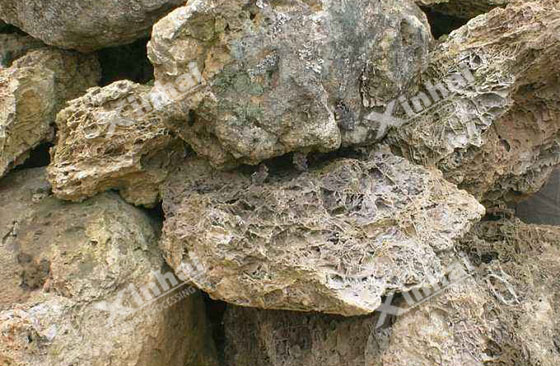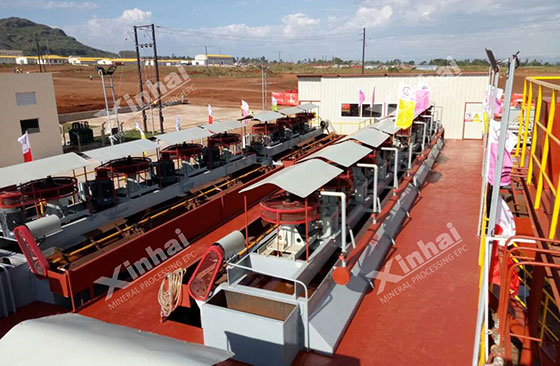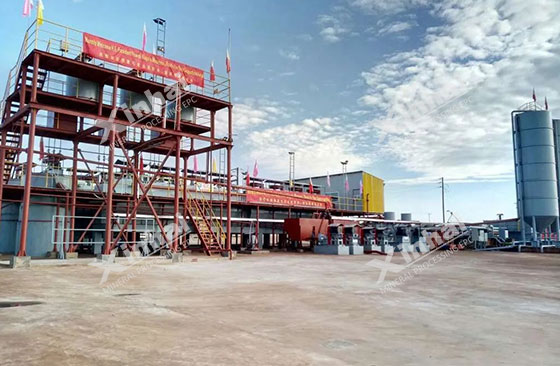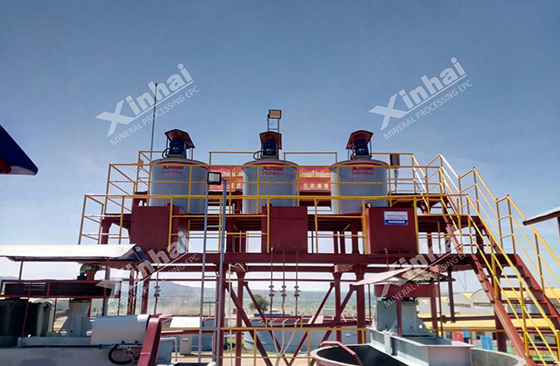In the development and utilization of mineral resources, low-phosphorus and low-iron ore is a relatively special type of ore. For this type of ore, how to effectively select the phosphorus element in it and improve the comprehensive utilization value of the ore is an important issue facing the field of mineral processing. This article will introduce the ore properties of low-phosphorus and low-iron ore and the phosphorus processing technology of low-phosphorus and low-iron ore.
Use the table of contents below to navigate through the guide:
01Ore properties of low-phosphorus and low-iron ore

Low-phosphorus and low-iron ore usually refers to a type of ore with low phosphorus content and relatively low iron content in iron ore. The main mineral composition of this ore may include iron minerals such as magnetite, hematite, siderite, and a small amount of phosphorus-containing minerals such as apatite.
This type of mineral composition is complex. In addition to iron minerals and phosphorus-containing minerals, it may also contain other impurity minerals such as quartz, feldspar, mica, etc. The presence of these minerals will have a certain impact on the phosphorus selection process. In addition, the ore has low phosphorus and iron content, and the particle size distribution is uneven, with both coarse-grained and fine-grained ores.
02Phosphorus separation process for low-phosphorus and low-iron ores
The ore properties of low-phosphorus and low-iron ores are complex and the content is low, which makes the ore separation method more difficult. The commonly used method is mainly flotation. According to the different properties of the ore, combined methods are also used for separation, such as magnetic separation-flotation combined method and gravity separation-flotation combined method.
1. Flotation of low-phosphorus and low-iron ore
Flotation is a common method for phosphorus selection. Its principle is to use the difference in physical and chemical properties of the mineral surface to separate phosphorus minerals from other minerals by adding flotation agents. Generally, low-phosphorus and low-iron ores are crushed and ground to make the minerals in the ore reach a monomer dissociation state, and then flotation agents are added, stirred evenly, and sent to the flotation machine for flotation. During the flotation process, phosphorus minerals are adsorbed by flotation agents, attached to bubbles and float to the surface of the pulp to form a foam product, namely phosphate concentrate; while other minerals remain in the pulp and become tailings.

The flotation method is suitable for processing various types of low-phosphorus and low-iron ores, and has relatively low requirements for the particle size and mineral composition of the ore; by selecting appropriate flotation agents and process parameters, phosphorus minerals can be effectively separated from other minerals and the recovery rate of phosphorus can be improved. However, the consumption of flotation agents in this method is large and the cost is high. At the same time, a large amount of water is consumed during the flotation process, and the wastewater generated is difficult to treat.
2. Magnetic separation-flotation combined phosphorus selection
The magnetic separation-flotation combined method is a method for phosphorus selection that combines magnetic separation and flotation. First, the magnetic separation method is used to separate the iron minerals in the low-phosphorus and low-iron ore to obtain iron concentrate and non-magnetic minerals. Then the non-magnetic minerals are ground and floated to select the phosphorus minerals and obtain phosphorus concentrate.

This method can recover iron and phosphorus at the same time, realize the comprehensive utilization of ore, and improve resource utilization. Then, the iron minerals are separated in advance by magnetic separation, which can reduce the processing volume in the subsequent flotation process and reduce the consumption and cost of flotation reagents. However, this method has certain requirements for the mineral composition and particle size distribution of low-phosphorus and low-iron ore, and a reasonable process design is required according to the specific properties of the ore.
3. Phosphorus separation by gravity separation and flotation
First, crush and grind the ore to make the minerals reach the monomer dissociation state, and then gravity separation is carried out. The density difference of the minerals is used to initially separate a part of the phosphorus-containing minerals and other heavy minerals, and at the same time, some impurity minerals with higher density are removed to improve the selection grade of subsequent flotation operations. After the concentrate obtained by gravity separation is processed, it is combined with the gravity separation tailings to enter the flotation operation. During the flotation process, appropriate flotation agents are added to make the phosphorus-containing minerals hydrophobic, attached to the bubbles and float to form a foam product, namely phosphate concentrate, while other minerals remain in the slurry as tailings.

The selection of phosphorus from low-phosphorus and low-iron ores is a complex process, and it is necessary to select appropriate phosphorus selection process methods according to the specific properties of the ore. Flotation, magnetic separation-flotation combined method and gravity separation flotation combined method each have their own characteristics and scope of application. In practical applications, a variety of process methods can be combined and optimized to improve the phosphorus selection effect and resource utilization. At the same time, it is necessary to continuously explore new phosphorus selection technologies and processes to reduce costs, reduce environmental pollution, and realize the efficient and green development and utilization of low-phosphorus and low-iron ores.


 marketing@ytxinhai.com
marketing@ytxinhai.com  0086 13810327080
0086 13810327080 






































































































 CHAT
CHAT MESSAGE
MESSAGE





